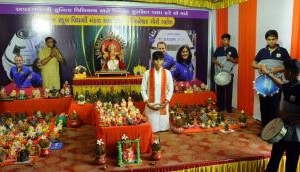
Today is International Day of the Girl Child. A day dedicated to the millions of girls across the globe, who struggle to be born, to stay alive in the face of gender inequality, and to live with dignity, despite all the violence wreaked on them.
In a country like India, the low sex ratio (number of females per 1,000 male) has led to a long history of negative repercussions on the socio-economic well being of the country. For every 1,000 males, India has 943 females, reports the survey results of the 2011 Census data. The numbers reflect an improvement over the last decade, when the sex ratio was just 933 as per the 2001 Census data.
Yet, the situation is quite imbalanced.
Catch presents some crucial numbers on sex ratio:
1084
With 1,084 females per 1,000 males, Kerala has the best overall sex ratio in the country. This is followed by Puducherry and Tamil Nadu with a sex ratio of 1,037 and 996 respectively.
951
Indian Muslims fare better than Indian Hindus in terms of the sex ratio. As per the 2011 Census data, Muslims have a sex ratio of 951, well above the sex ratio of 939 among Hindus. Over the last decade, the sex ratio among Muslims has improved significantly from 936 in 2001 to 951 in 2011. The improvement, however, is lower among Hindus - from 931 in 2001 to 939 in 2011.
919
With 919 girls for every 1,000 boys, the child sex ratio in our country is abysmally low, reports the survey results of the 2011 Census data. The numbers have gone down from 2011, when the Census data revealed that India has a Child Sex Ratio (CSR) of 927. The child sex ratio has reached its lowest levels in India since 1961.
834
Haryana has the worst child sex ratio in the country with just 834 girls per 100 boys. This is followed by Punjab, Jammu and Kashmir, Delhi and Chandigarh with child sex ratios of 846, 862, 871 and 880 respectively.
618
With 618 females per 1,000 males, Daman and Diu has the worst overall sex ratio in the country. Other states and UTs with low sex ratio are Dadra and Nagar Haveli (774), Chandigarh (818), Delhi (868), Andaman and Nicobar Islands (876), and Haryana (879).
100
The government has identified 100 gender critical districts with dangerously low levels of child sex ratio (CSR). Some of the states with low CSRs are:
Haryana 12
Rajasthan 10
Uttar Pradesh 10
Maharashtra 10
Punjab 11
Jammu & Kashmir 5
Delhi 5
Gujarat 5
Madhya Pradesh 4
Uttarakhand 2
In 2014, when the Centre released the CSR data, it cited social preferences of the boy child over the girl child due to prevalent beliefs:
"Some of the reasons for neglect of girl child and low child sex ratio are son's preference and the belief that it is only the son who can perform the last rites, that lineage and inheritance runs through the male line, sons will look after parents in old age, men are the bread winners etc. Exorbitant dowry demand is another reason for female infanticide. Small family norm coupled with easy availability of sex determination tests may be a catalyst in the declining child sex ratio, further facilitated by easy availability of pre-conception sex selection facilities," Ghulam Nabi Azad, former minister for Health and Family Welfare said in a written reply to the Rajya Sabha.
First published: 11 October 2016, 12:20 IST







![BJP's Kapil Mishra recreates Shankar Mahadevan’s ‘Breathless’ song to highlight Delhi pollution [WATCH] BJP's Kapil Mishra recreates Shankar Mahadevan’s ‘Breathless’ song to highlight Delhi pollution [WATCH]](https://images.catchnews.com/upload/2022/11/03/kapil-mishra_240884_300x172.png)

![Anupam Kher shares pictures of his toned body on 67th birthday [MUST SEE] Anupam Kher shares pictures of his toned body on 67th birthday [MUST SEE]](https://images.catchnews.com/upload/2022/03/07/Anupam_kher_231145_300x172.jpg)






